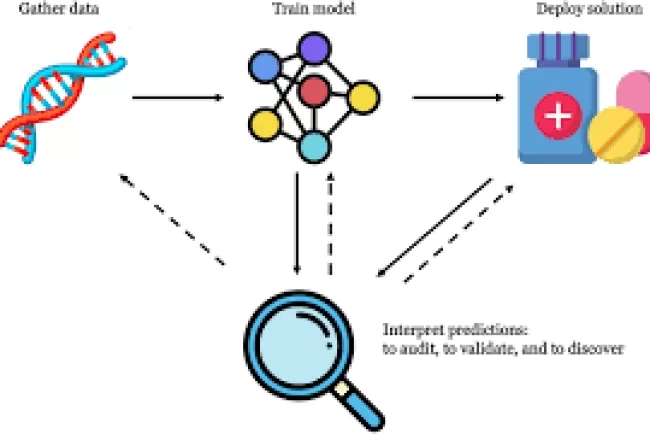Human-Computer Interaction: Uniting People and Technology...!!!
Human-Computer Interaction (HCI) is a multifaceted field dedicated to the design, evaluation, and implementation of interactive computing systems for human use, and the exploration of the interactions between them. The primary aim of HCI is to develop user-friendly interfaces that improve the user experience and make technology more efficient and accessible. HCI integrates various disciplines, including computer science, psychology, design, and engineering.

Fundamental Concepts in HCI
Several key concepts form the backbone of HCI study and practice:
-
Usability: Usability refers to how easily users can interact with a system to accomplish their goals. It includes aspects such as efficiency, effectiveness, and satisfaction. A highly usable system allows users to complete tasks quickly and with minimal effort, minimizing errors and frustration.
-
User Experience (UX): User Experience (UX) centers on the overall experience of users interacting with a system. It considers users' emotions, attitudes, and perceptions, aiming to create positive and meaningful interactions. UX design involves understanding user needs, preferences, and behaviors to develop intuitive and enjoyable interfaces.
-
Accessibility: Accessibility ensures that interactive systems are usable by people with diverse abilities and disabilities. Designing for accessibility involves accounting for factors such as visual, auditory, motor, and cognitive impairments. Accessible design benefits individuals with disabilities and enhances the overall usability of a system for all users.
-
Interaction Design: Interaction design involves creating engaging interfaces that facilitate effective communication between users and systems. It includes designing elements such as buttons, menus, and icons, as well as defining the flow of interactions. Interaction designers aim to create intuitive and seamless experiences that align with users' mental models.
-
User-Centered Design (UCD): User-Centered Design (UCD) is an iterative design process that places users at the center of the development cycle. It involves understanding user needs, conducting user research, and incorporating user feedback throughout the design and development stages. UCD ensures that the final product meets the needs and expectations of its users.
HCI Research Methods
HCI researchers use various methods to study and evaluate human-computer interactions:
-
User Research: User research involves gathering insights into users' needs, behaviors, and preferences. Techniques such as interviews, surveys, and observations are used to collect qualitative and quantitative data. User personas and scenarios are often developed to represent different user groups and their goals.
-
Prototyping: Prototyping involves creating preliminary versions of a system to test and refine design concepts. Low-fidelity prototypes, such as paper sketches, allow for quick and cost-effective iteration, while high-fidelity prototypes closely resemble the final product. Prototyping helps identify usability issues and gather user feedback early in the design process.
-
Usability Testing: Usability testing involves observing users as they interact with a system to identify usability issues and areas for improvement. Test participants are given specific tasks to complete, and their interactions are recorded and analyzed. Usability testing provides valuable insights into how users navigate and use a system.
-
A/B Testing: A/B testing involves comparing two versions of a system to determine which one performs better. Users are randomly assigned to one of the two versions, and their interactions are tracked and analyzed. A/B testing helps identify design elements that positively or negatively impact user experience.

Applications of HCI
HCI has wide-ranging applications across various domains:
-
Healthcare: In healthcare, HCI plays a crucial role in designing electronic health records (EHRs), telemedicine systems, and medical devices. Usable and intuitive interfaces improve patient care, enhance communication among healthcare providers, and reduce the risk of errors.
-
Education: HCI is instrumental in developing educational technologies, such as e-learning platforms and educational games. These systems provide engaging and interactive learning experiences, making education more accessible and effective for diverse learners.
-
Workplace: HCI contributes to the design of productivity tools, collaborative software, and ergonomic workstations. User-friendly interfaces enhance employee efficiency and satisfaction, leading to improved job performance and well-being.
-
Entertainment: The entertainment industry benefits from HCI through the design of video games, virtual reality (VR) experiences, and multimedia applications. Engaging and immersive interfaces create enjoyable and memorable experiences for users.
-
Public Services: HCI is essential in designing public service systems, such as government websites, public kiosks, and transportation systems. Accessible and user-friendly interfaces ensure that essential services are available to all citizens, regardless of their technical expertise.
Challenges and Future Directions in HCI
While HCI has made significant advancements, several challenges remain:
-
Ethical Considerations: Ethical considerations in HCI involve addressing issues related to privacy, data security, and user consent. Ensuring that user data is handled responsibly and transparently is crucial for maintaining trust.
-
Cultural Sensitivity: Designing for diverse cultures and contexts requires understanding and respecting cultural differences. HCI practitioners must consider cultural nuances and local preferences to create interfaces that resonate with users worldwide.
-
Emerging Technologies: The rapid advancement of emerging technologies, such as artificial intelligence (AI) and augmented reality (AR), presents new opportunities and challenges for HCI. Designing intuitive and meaningful interactions with these technologies requires continuous innovation and research.
In summary, Human-Computer Interaction is a dynamic and evolving field that seeks to unite people and technology. By prioritizing usability, user experience, and accessibility, HCI practitioners strive to create interfaces that enhance human capabilities and enrich our interactions with digital systems. As technology continues to evolve, the principles and practices of HCI will remain essential in shaping the future of human-computer interactions.
What's Your Reaction?

















